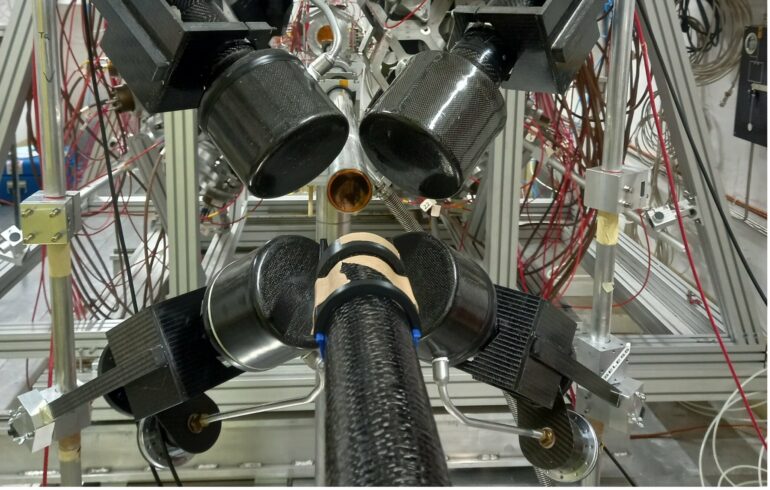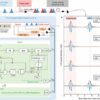Cerium is a rare Earth metal that has numerous technological applications, for example, in some types of lightbulbs and flat-screen TVs. While the element is rare in Earth’s crust, it is slightly more abundant in the universe. However, much is unknown about how it is synthesized in stars.
Now, in a new study published in Physical Review Letters, the n_TOF collaboration at CERN investigates how cerium is produced in stars. The results differ from what was expected from theory, indicating a need to review the mechanisms believed to be responsible for the production of cerium—and other heavier elements—in the universe.
“The measurement we carried out enabled us to identify nuclear resonances never observed before in the energy range involved in the production of cerium in stars,” explains Simone Amaducci of INFN’s Southern National Laboratories and first author of the study. “This is thanks to the very-high-energy resolution of the experimental apparatus at CERN and the availability of a very pure sample of cerium 140.”
The abundance of elements heavier than iron observed in stars (such as tin, silver, gold, and lead) can be reproduced mathematically by hypothesizing the existence of two neutron capture processes: the slow (s) process and the rapid (r) process.
The s process corresponds to a neutron flux of 10 million neutrons per cubic centimeter while the r process has a flux of more than one million billion billion neutrons per cubic centimeter. The s process is theorized to produce about half of the elements heavier than iron in the universe, including cerium.
CERN’s Neutron Time-of-Flight facility (n_TOF) is designed to study neutron interactions, such as those that occur in stars. In this study, the scientists used the facility to measure the nuclear reaction of the cerium 140 isotope with a neutron to produce isotope 141.
According to sophisticated theoretical models, this particular reaction plays a crucial role in the synthesis of heavy elements in stars. Specifically, the scientists looked at the reaction’s cross-section: the physical quantity that expresses the probability that a reaction occurs. The scientists measured the cross section at a wide range of energies with an accuracy 5% higher than previous measurements.
The results open up new questions about the chemical composition of the universe. “What intrigued us at the beginning was a discrepancy between theoretical star models and observational data of cerium in the stars of the M22 globular cluster in the Sagittarius constellation,” explains Sergio Cristallo of INAF’s Abruzzo Astronomical Observatory, who proposed the experiment.
“The new nuclear data differs significantly, up to 40%, from the data present in the nuclear databases currently used, definitely beyond the estimated uncertainty.”
These results have notable astrophysical implications, suggesting a 20% reduction in the contribution of the s process to the abundance of cerium in the universe. This means a paradigm shift is required in the theory of cerium nucleosynthesis: other physical processes that are not currently included would need to be considered in calculations of stellar evolution.
Furthermore, the new data has a significant impact on scientists’ understanding of the chemical evolution of galaxies, which also affects the production of heavier elements in the universe.
More information:
S. Amaducci et al, Measurement of the Ce140(n,γ) Cross Section at n_TOF and Its Astrophysical Implications for the Chemical Evolution of the Universe, Physical Review Letters (2024). DOI: 10.1103/PhysRevLett.132.122701
Citation:
Scientists investigate how cerium is produced in the universe (2024, March 21)



